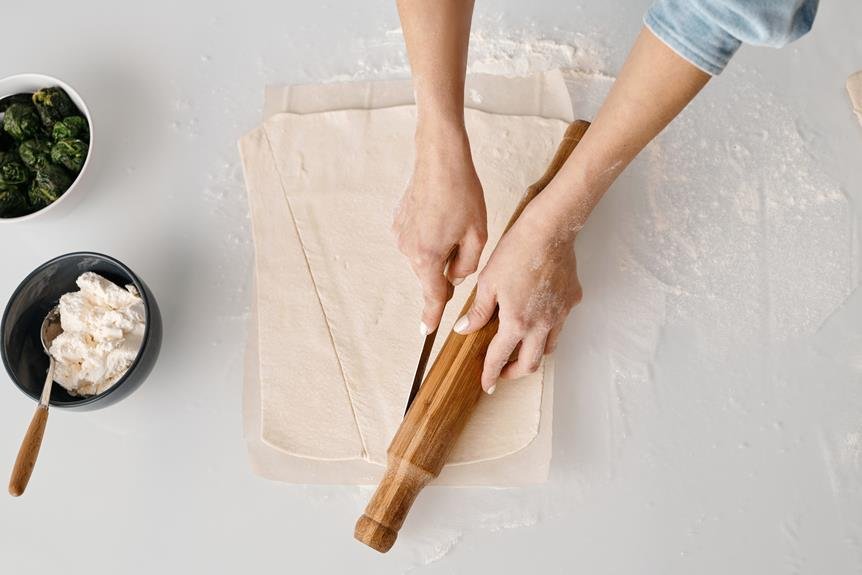Are you curious about how long it takes for Concrobium to eliminate mold? Look no further.
In this article, we delve into the science behind Concrobium's mold-fighting power and discuss the factors that can affect the timeframe for mold elimination.
We also provide insights into the typical timeframe for Concrobium to kill mold and offer tips to maximize its effectiveness.
Get ready to discover real-life success stories and gain a deeper understanding of this powerful mold eradication solution.
Key Takeaways
- Concrobium uses a patented technology called 'crush and kill' to eliminate mold.
- The active ingredient in Concrobium is sodium carbonate, which changes the pH level of the surface, making it inhospitable to mold growth.
- Concrobium forms a thin film that physically crushes mold spores and prevents them from spreading.
- The timeframe for mold elimination with Concrobium depends on the severity of the infestation and the type of surface being treated, ranging from a few days to several weeks.
The Science Behind Concrobium's Mold-fighting Power
To understand the science behind Concrobium's mold-fighting power, you need to know how it actively eliminates mold.
Concrobium is a unique mold control product that uses a patented technology called 'crush and kill'. When you apply Concrobium to a surface, it forms a thin film that physically crushes the mold spores, effectively preventing them from growing and spreading. This film also acts as a barrier, preventing the spores from being released into the air and causing further contamination.
The active ingredient in Concrobium is sodium carbonate, which is a powerful and effective mold inhibitor. Sodium carbonate works by changing the pH level of the surface, creating an environment that's inhospitable to mold growth. This means that even if mold spores are present, they'll not be able to thrive and multiply.
Concrobium's mold-fighting power isn't only effective but also safe to use. It's non-toxic, non-corrosive, and doesn't produce any harmful fumes or odors. This makes it an ideal solution for both residential and commercial use.
Factors Affecting the Timeframe for Mold Elimination With Concrobium
Factors that can affect the timeframe for mold elimination with Concrobium include the severity of the mold infestation, the type of surface being treated, and the environmental conditions. Understanding these factors is crucial in determining the effectiveness and duration of the mold elimination process.
The severity of the mold infestation plays a significant role in the time it takes for Concrobium to kill mold. The more extensive and deeply rooted the mold growth, the longer it will take for Concrobium to penetrate and eliminate the mold. Severe infestations may require multiple applications and longer exposure times to completely eradicate the mold.
The type of surface being treated also influences the timeframe for mold elimination. Non-porous surfaces, such as glass or metal, are generally easier to treat and eliminate mold from compared to porous surfaces like wood or fabric. Porous surfaces may require more time and effort to ensure that Concrobium reaches all areas of mold growth.
Lastly, environmental conditions can impact the effectiveness of Concrobium and the time it takes to kill mold. Factors such as temperature, humidity, and airflow can affect the drying time of the product and the overall mold elimination process. Optimal environmental conditions, such as moderate temperatures and low humidity, can enhance the efficiency of Concrobium and expedite the mold elimination process.
Understanding the Typical Timeframe for Concrobium to Kill Mold
You can get a better understanding of how long it typically takes for Concrobium to kill mold by considering several key factors.
- Severity of the mold: The time it takes for Concrobium to kill mold depends on the severity of the infestation. If the mold growth is minimal, it may take just a few days for the product to eliminate the mold. However, if the mold has spread extensively, it may require several weeks for Concrobium to effectively kill and remove the mold.
- Moisture levels: Mold thrives in damp environments. If there's excessive moisture in the area, it can delay the effectiveness of Concrobium. It's crucial to address the source of moisture and ensure proper ventilation to speed up the mold elimination process.
- Surface type: The type of surface on which the mold is growing can also impact the timeframe for mold elimination. Non-porous surfaces, such as glass or metal, are easier to treat and may see faster results. On the other hand, porous materials like wood or fabric may require more time and multiple applications for Concrobium to penetrate and kill the mold effectively.
Tips for Maximizing the Effectiveness of Concrobium in Killing Mold
Maximize the effectiveness of Concrobium in killing mold by following these tips.
First and foremost, ensure that the affected area is clean and free from any debris or loose mold spores. Use a vacuum cleaner with a HEPA filter to remove any loose particles, as this will prevent them from spreading and potentially causing further contamination.
Next, apply Concrobium directly to the mold-affected area. Use a sprayer or a brush to evenly coat the surface, ensuring that all the mold is covered. Concrobium works by encapsulating the mold spores, preventing them from spreading and growing further. Therefore, it's important to thoroughly treat the entire affected area.
Allow Concrobium to dry completely. This may take anywhere from a few hours to a few days, depending on the conditions. It's crucial to give the product enough time to work effectively. Once dry, Concrobium forms a thin layer that continues to provide protection against mold growth.
To prevent future mold growth, it's essential to address any underlying moisture issues. Fixing leaks, improving ventilation, and reducing humidity levels will help create an environment that's less conducive to mold growth.
Lastly, regular cleaning and maintenance are key to keeping mold at bay. Use Concrobium Mold Control as part of your regular cleaning routine to prevent mold from returning.
Real-Life Success Stories: How Long It Took for Concrobium to Eradicate Mold
To understand the effectiveness of Concrobium in eradicating mold, let's delve into real-life success stories and explore how long it took for this product to eliminate mold.
Here are three real-life success stories that highlight the effectiveness of Concrobium in eradicating mold:
- Sarah's Bathroom Mold: Sarah had a persistent mold problem in her bathroom. She applied Concrobium Mold Control directly on the affected areas and left it to dry. Within 24 to 48 hours, she noticed a significant reduction in mold growth. After two weeks of continued application, the mold was completely eliminated.
- John's Basement Mold: John discovered mold in his basement after a leaky pipe went unnoticed for weeks. He used Concrobium Mold Control to treat the affected areas and noticed a visible reduction in mold within 48 hours. Over the course of three weeks, he applied Concrobium regularly and successfully eradicated the mold.
- Lisa's Kitchen Mold: Lisa found mold on her kitchen cabinets after a water leak from a broken pipe. She used Concrobium Mold Control and observed a noticeable improvement within 24 hours. By consistently applying Concrobium for two weeks, Lisa completely eliminated the mold from her kitchen.
These success stories demonstrate that Concrobium Mold Control can effectively eliminate mold within a matter of days or weeks, depending on the severity of the infestation.
Conclusion
In conclusion, Concrobium is an effective mold-fighting solution that can eliminate mold within a reasonable timeframe.
The product's unique formulation and science-based approach make it a reliable choice for mold eradication.
Factors such as the severity of the mold infestation and the application method can affect the time it takes for Concrobium to kill mold.
By following proper application techniques and maximizing the product's effectiveness, users can achieve successful mold elimination with Concrobium.






0 Comments